- As current Artistic Director of LIG Art Hall you are in charge of overall planning and programming for the theater as well as its management, but originally you were active as a dancer and choreographer. I would like to begin by asking you about your experiences as an artist. How did you become involved in dance originally?
- I wanted to be a dancer from the time I was little, so I entered Ewha Womans University to major in Dance in its Physical Education Science Department. The university also has a Dance Department that was more famous, but at the advice of my parents I entered the dance course of the Physical Education Science Department so I would also have the option of becoming a teacher after graduation.
- So, your studies were in physical education? How was that different from majoring in the Dance Department?
- In the Physical Education Science Department our education was primarily in theory, while the Dance Department concentrated primarily on dance in practice, in performance training rather than theory. For that reason, I took dance training outside the university during that time and participated in performance outside as well. In 1988, when I graduated from university, I immediately had my debut as a professional dancer and joined the Kim Hyun-ja Chum Academy led by Kim Hyun-ja, who was also the director of the National Dance Company of Korea. At the time the Chum Academy had a sort of role of providing support to nurture young dancers, and I studied there for a year and a half before making my debut as choreographer in 1990.
- Many universities in the ROK have dance departments, and from what I see the ties between graduates and their alma maters are very strong. Wasn’t it difficult to become independently active?
- I think I was fortunate because I actually had greater freedom. It was a time when you were beginning to see the emergence of so-called independent dancers and choreographers and I was able to dance in the productions of pioneering artists in contemporary dance such as Kang Song-won and the artistic director of the National Contemporary Dance Company of Korea), Hong Sung-yop. Besides participating in their performances, I was also able to meet many artists from other genres.
- When you started your own company Dance Company JohPark, the innovative works you presented had strong physicality as well as a compositional aspect that was theatrical in nature.
- Dance Company JohPark was the company I formed with some of my contemporary independent artists. I was active in that company until 2000 as a dancer and choreographer. The company itself was dissolved in 2003. After that I worked as a choreographer for theater, musicals and opera, and since that took me away from contemporary dance to a large degree, I hear that people were asking what had happened to Joh Seong-joo.
- Eventually you went from artist to the artistic director of a theater. How did that transition take place?
- When the LIG Art Hall opened in 2006, I happened to be asked to choreograph one of the opening productions, a work titled Rain … Wind … . At that time the job of artistic director was still open and it appears that someone recommended me for the job without my knowing it. I had been managing a company, so I had some knowledge about the mechanism by which stage productions are mounted and the creative side, and I had also experienced working in the organizing office of the 1995 Korea International Dance Event and in 1998 I was director of the administrative office for the 1st SIDance (Seoul International Dance) festival and was also in charge of its foreign part because I could speak English. I believe I was recommended for the job because of that experience in the areas of planning and programming work other than the financial aspects. The offer for the artistic director’s job came while I was in rehearsals for Rain … Wind … and I decided to accept it.
- Wasn’t it a rather difficult decision to make?
- At the time I was in the latter half of my 30s, so if I had been two or three years younger, I would probably have turned it down. I had gained a fair amount of experience in the performing arts at that point in my career and I accepted the job because of the desire to use that experience to try and build a theater program with my own abilities.
- Have you continued any activities as an artist since taking on the job of artistic director at LIG Art Hall?
- Since our theater doesn’t have a very large staff and because my working as an artist would involve receiving support for my productions when in fact my job as artistic director is to provide support for other artists, I am not working as an artist now. I want to devote my life fully now to the job of LIG Art Hall’s artistic director. I still think about my own artistic projects in my head, but I believe the projects I will be presenting from now on are not as an artist but as a director or producer.
- Originally LIG Art Center was established as a theater to specialize in dance, can you tell us about how it came to be established and how it is run?
-
At the time it opened, the intention was for it to be primarily a contemporary dance theater, but today the focus has shifted to a broader concept of “contemporary,” with dance making up about 20% of the total performances, music accounting for 40% and the rest made up of a mix of multimedia performance from a variety of genres.
The LG Fire Insurance Co., Ltd. began supporting young artists on an ongoing basis from 1998, and in 2006 its corporate identity was changed to LIG Insurance Co., Ltd. and it moved into its own newly constructed corporate headquarters building. The former Chairman of the company was a man who was very knowledgeable about the arts and culture and he personally supported a good number of artists, and when he saw the blueprints for the new corporate headquarters building, he decided to make the space that was originally intended to be an auditorium into a small theater and multi-purpose rehearsal rooms.
At the time when the theater opened in August of 2006, it was administered by the LIG Insurance company’s Public Relations department, so in my position I was actually an employee of the LIG. It was run like that for a few years until it was decided that there were limitations as to what it could achieve simply as a theater facility (hardware) in terms of its public role and the value it could create. So, the decision was made to establish the LIG Arts Foundation in April of 2009 and run it as the non-profit organization we are today.
LIG Arts Foundation is an organization dedicated to serving as a platform to connect the arts and society by communicating a variety of performing arts and their value broadly through society while engaging in programs to support young artists’ creative activities, artist interaction, foreign exchange, education and supporting performance activities. In specific terms, our programs are divided into ones that use our theater and facilities for “Supporting performance production,” our “Supporting space” program providing support in the form of creative working space, our programs for “Presenting arts education programs” and our programs “Supporting international exchange.” Our programs “supporting performance production” programs involve comprehensive support for young artists’ research, creation and performances, while our “supporting space” program provides spaces for studio work and performances and our arts education programs provide seminars and arts communication programs not only for professionals but also for the general public as well. Our programs “supporting international exchange” provides support for global creative activities as well as building an international network overseas that creates opportunities for artist exchanges. - For the Foundation’s finances, does LIG Insurance Co., Ltd. support it completely on?
- Before the forming of the Foundation it did, but today we operate on funding from LIG Insurance, the portal site operator Daum Communication Co., Ltd. and LIG Investment & Securities Co., Ltd. In this sense, I think you can say that we are a leading example of Korean corporate philanthropy.
- What is the theater’s annual budget?
- It is increasing year by year but last year, when we opened the LIG Art Hall Busan, it totaled 3.5 billion Korean won (approx. USD 3 million). Of this, some 40% is the program budget.
- What is your program like?
-
Our annual program includes about 25 productions, but these are not simply productions self-planned and produced by the theater. Most of the performances on our schedule are produced through artist residency programs, and this is something that makes LIG Art Hall unique.
Our residency programs come in three types: “Residency L” type offering a two-year residency support to mainstay domestic artists, “Residency I” type that supports research and performances selected independently by the Young Artists Club newly formed each year of young artists, and the “Residency G” type for two to three month residencies for foreign and domestic artists to work together on collaborative works to be performed in our showcase program. In our “Residency L” program, three artists are chosen each year, and our selections for the 2012-2013 season were a legendary composer on the club scene, Choi Soo-whan, a stage director known for his pursuit of contemporary relevance, Kim Chol-seong, and the choreographer Ryu Jang-hyun, who is now being looked to a leader of the next generation of dance artists. This program starts with thorough discussions about what the artist wants to do in the two-year residency period in order to draw up a plan of support that the artists themselves want and their projects will require. One example was a project where a sound artist wanted to spend two years in workshops and going to trial performances and then create a CD. So, even though we are a theater, or support can end up creating a CD like this. In the case of a dance or theater residency, if the artist doesn’t have a rehearsal studio, we supply that space, and if they lack technical staff we have our theater’s staff participate from the studio work stage offering their expertise to figure out how to achieve the type of stage art and lighting the artist wants.
Based on the success of this residency program, we plan our own productions in three performance series annually for our “contemporary arts program,” “music program” and “program for children, families and company employees.”
I believe that one of our biggest achievements thus far at the LIG Art Hall and the LIG Arts Foundation is that we have gotten a lot of people to ask the question, “Is it possible for a theater backed by a corporation to run on a program of non-mainstream independent type productions?” In other words, I believe it is a big achievement that we have broken down the preconception that corporations are only concerned about the appeal they can make to a mass audience and the advertising effect that will bring them and have succeeded in showing a different type of corporate philanthropy. - In 2011, LIG’s new theater in Busan opened. Would you tell us about how it came to be established and how it is different from its theater in Seoul?
-
When plans were going forward for renovations for the LIG Insurance Busan headquarters building, the former Chairman suggested that a multi-purpose space be created in it. That plan went through and the space opened in 2011. It has a “black box” type multi-purpose hall (158 to 305 seats) and two multi-purpose studios.
The Gyeongsangnam-do area that Busan is the center of is rich in artistic potential but lacks theaters and the necessary support systems. We hope that the new LIG Art Hall in Busan will make a significant contribution in that respect. However, from the standpoint of the LIG Arts Foundation, our theater in Seoul is being run as a theater proper, but the LIG Art Hall in Busan is a multi-purpose hall, and of present there is no official plan as to how it will run.
Last year, we began by putting on a program of unique experimental works and created opportunities for the artists to meet with the audience and have exchanges with each other. Also, we ran an experimental program of support for young artists’ creative activities while we search for ways to create a system of support that would best fit the unique arts environment of Busan. In addition to this type of artist-centric program, we hope to gradually build a favorable arts environment and audience through ongoing efforts in the areas of educational programs, seminars and exhibits and programs targeting children and families. However, it is probably going to take a considerable amount of time to promote a variety of contemporary contents and develop an audience for them. At the same time, there will be a need to come up with an effective strategy for providing support for young artists. - What kind of support are you actually providing currently for young artists in Busan?
-
In March of this year we had a project called World Wide Wavers 2012 “true /
Honto no koto
” and “con.act.” This was a program that sought to bring technology into the creative process in new ways, and we began by inviting a performance of the Japanese dance work “true /
Honto no koto
” that had been created in a residency program of the Yamaguchi Center for Arts and Media and actively introduced media technology to explore new possibilities of expression in relation with the human body. This is a work that creates a unique form of expression in stage performance by using sensors attached to the dancers bodies and using digital control of the oscillators, video, sound and LED lighting used in the stage effects to produce an interactive state between the physical movement of the performers and the technology. It brings together three cutting-edge artists in performers Tsuyoshi Shirai and Takao Kawaguchi and lighting artist Takayuki Fujimoto and an additional ten engineers.
On the Korean side, media artists Yang Young-jun and Nam Sang-won and choreographer Kim Jong-un created a project titled con.act dealing with the theme of relationships based on the recognition of relationships in Gestalt psychology and utilizing the tools of abstraction, reality and diagram. Rather than being a “performance,” this was a work that showed the audience the process of searching for the ways that the media, sound and movement of the dancers can interact in the creation of each segment of a work.
Since the Busan facility has multi-purpose studios in addition to its main hall, we are able to present this kind of experimental work, and we can also connect then to Seoul to produce works for formal performance. - How do you view the arts scene in Busan today?
-
As I said earlier, there are artists of great potential but a lack of theaters and artist support programs, and there is not much depth to the audience.
One of the representative young performance groups in Busan is Fat Bridge. This group is not a theater company but one that does stages on a production basis. In the five years the group has been active they have won acclaim with a series of widely popular productions such as A Love Song, Sorry I’m Ugly and Have to Go Crazy (or If I didn’t go crazy ). As in Seoul, the theater company system is very strong in Busan, and in many cases the leader of the company is also its playwright and director. In the case of Fat Bridge, however, it is a group using a system where one production director is in charge of supervising the entire production process, from the choice of the work through to the performance. In Korea, this kind of system is rarely used, except in commercial theater, but there are people like Fat Bridge using it in Busan. - Earlier you mentioned Japan’s Yamaguchi Center for Arts and Media, but can you tell us in general your approach to programs of international collaboration?
-
One of our approaches is our “Residency G” program where domestic and foreign artists create a collaborative work for a showcase performance in the course of a two- to three-month residency. Participants are not selected through open applications but through a process where we connect artists together or we get suggestions from the artists themselves for one-time projects. The purpose of the program is not limited to creating works for performance but can also involve other purposes that the artists request, such as workshops and seminars.
Other international collaborative projects we have conducted include one with Papa TARAHUMARA the year before last, another with artists from Australia this year and one planned for next year with Italian artists.
Since the purpose of these programs is not only to creating works for performance, they involve not only artists but also many mania type people with intense interest in specific fields who can be an inspiration for the artists and encourage mutual influence. In this sense, our programs are different from the usual international exchange programs.
In addition, we have created partnerships between theaters known for their programs of progressive, experimental dance in the three cities of Tokyo (Aoyama Round Theatre), Montreal (Tangente) and Seoul (LIG Art Hall) to mount contemporary dance performances since 2008 as the “DANCE-X/Tokyo-Seoul-Montreal” project with collaborative curation. Until now this has involved mainly performance tours to the three cities, but from 2013 we also plan to have a program of one-week residencies in each city to strengthen exchange between artists. - We hear that you have also begun exchanges and joint projects domestically with other theaters and residency facilities within the ROK.
-
I had long been thinking whether there wasn’t something we could do about the fact that the support artists needed was often divided between different organizations and facilities, with each having their own unique focuses and financial limitations, and couldn’t we connect these organizations in effective ways. The different organizations have different forms of support they can offer. Some can supply funding, while others can provide a creative work environment or performance spaces. Recently, there are a growing number of residence facilities in Seoul and the surrounding areas. At a meeting at one of them I was talking about this possibility and several people took an interest in it. That led to the start of some experimental cooperative projects.
In the case of dancer Jung Young-doo, who goes to Japan almost every year to give workshops and perform, we arranged for him to create a work in a residency in Busan to be performed at the private-sector theater of the LG Arts Center in Seoul. LG Arts Center is another theater supported by corporate philanthropy and in this project a work was born as a result of us supplying the creative work space and environment and the LG Arts Center provided funding and the theater space for the performances. Also, we have collaborated with the Gyeonggi Creation Center that was established in Ansan-city with the purpose of supporting the creative activities and research of artists in the fine arts. In a synchronized project, we have brought together the video artist Kim Tae-un and the dance-specialized photographer Choi Young-mo and others and we are preparing to have them work with a group of dancers to create a work. The other day, we had the equipment put in place at the Gyeonggi Creation Center for this project and began experimenting with it. It is a joint project to explore what sorts of artistic collaborations can be done and research and develop the methods that can be used, with Gyeonggi Creation Center supplying the research and development facilities and we providing the space to display the results in Busan this September. The good thing about this kind of cooperation is that it saves labor on both sides and enables the two institutions to share their artist resources. - Listening to you speak, I get the impression that you are very open to and supportive of not only the artists but also other organizations.
- We consider LIG Art Hall to be a platform and our purpose to “nurture.” We hope that our performances, workshops and residencies and other projects in our programs will foster encounters between artists and with the audience and those encounters will then lead to new developments in a growing circle of activity.
- For my last question, I would like to ask you about dance. How do you view Korea’s dance world today?
- Since I am not involved in the dance world as I once was, I am not really in a position to speak about it, but I feel that in terms of technique and physical ability, the level is very high. However, I also feel that there is not enough diversity. Also, I feel it is my job to propose new diversity and the support to nurture new things from it.
- I know how busy you are between your responsibilities in Seoul and Busan, and I would like to thank you very much for taking the time to speak with us today.
Joh Seong-joo
Republic of Korea’s LIG Art Hall
A hub for contemporary performance
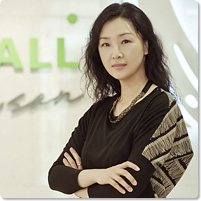
Joh Seong-joo
Artistic Director of LIG Art Hall/LIG Arts Foundation
Graduated from the Physical Education Science Department of Ewha Womans University with a major in Dance in 1988, and entered the Kim Hyun-ja Chum Academy the same year and completed studies there in 1990. Later, she studied theatre directing in the Dept. of Performance & Visual Media of the Graduate School of Arts, Chung-Ang University, completing the curse in 2009. After the debut of her first work of choreography in 1990, Joh pursued a successful career as a contemporary dance choreographer and dancer. After being active as a member of the Puri Dance Theater and Dance Theater ON, she formed Dance Dance Company JohPark in 1997, serving as its representative and creating numerous unique works. After leaving the company Joh worked as a choreographer for theater and musicals and also wrote scripts for musicals. In addition to these activities as an artist, Joh served as administrative director for the Korea International Dance Event (1995) and the SIDance (Seoul International Dance) (1998) gaining further experience in production. After serving as a visiting instructor at the School of Performing Arts and Media, College of Arts, Chung-Ang University and as resident choreographer of Theatre Company TuuL, in 2006 she was appointed Artistic Director of LIG Art Hall, where she is energetically directing her passion for the arts curiosity in its diversity to the job of supporting the arts as a principle figure in a non-profit theater director.
Interviewer: Noriko Kimura [Seoul-based performing arts coordinator and translator]
Photo courtesy of LIG Art Hall
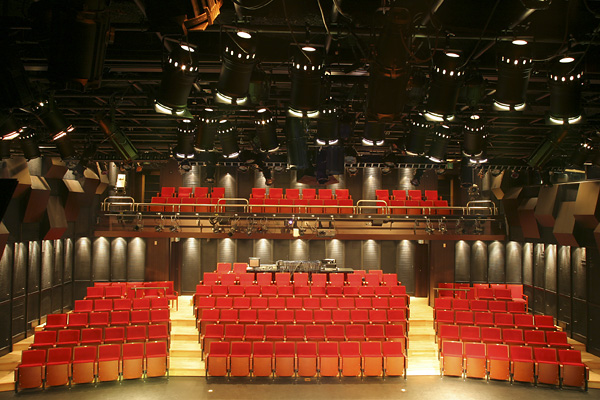
LIG Art Hall
LIG Tower, 649-11 Yeoksam-dong, Gangnam-gu, Seoul, KOREA
Tel: +82-2-6900-3900
Fax: +82-505-136-9107
ligarthall[a]lig.co.kr
Theater of LIG Art Hall
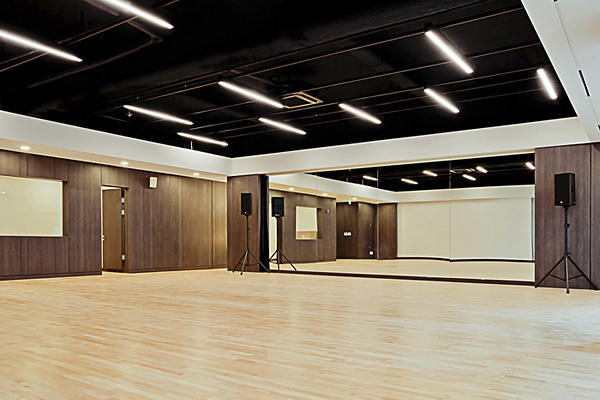
LIG Art Hall Busan
LIG Bldg, 830-30, Beomil-dong, Dong-gu, Busan, KOREA
Tel: +82-51-661-8701
Studio of LIG Art Hall Busan
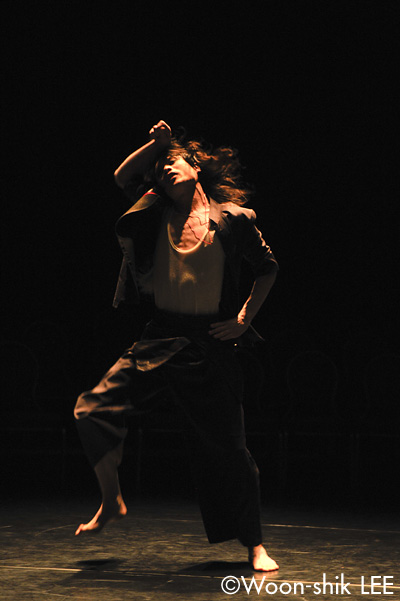
“Choom.Shin Project (dance spirit project)”
(2011, LIG Art Hall)
Choreographed by Young-cool PARK
Photo by Woon-shik LEE
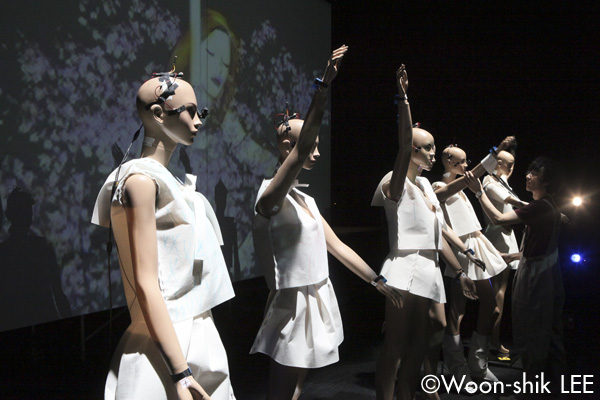
“Six mannequins”
(2011, LIG Art Hall)
Musician Dalparan, Byung-jun KWON
Photo by Woon-shik LEE

“Personas”
(2009, LIG Art Hall)
Script & directed by Hwa-jung KANG
Photo by Woon-shik LEE
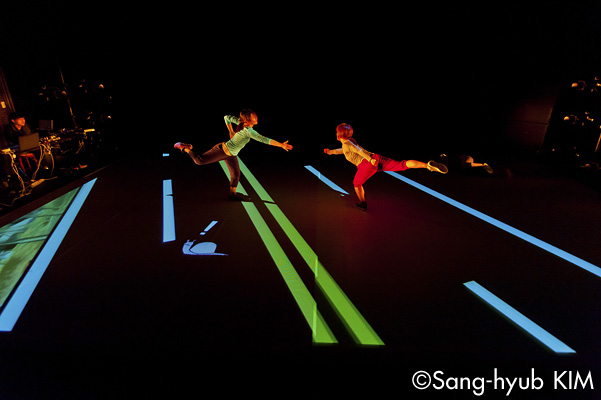
“con.act”
(2012, LIG Art Hall / Busan)
Open studio program by digital media artist Yong-jun PARK
Photo by Sang-hyub KIM

“Promenade”
(2009, LIG Art Hall)
Choreographed by Young-doo JUNG
Photo by Woon-shik LEE
Related Tags

